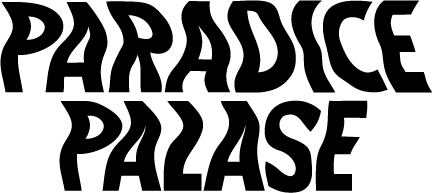Interview: Anna Guarneri
Anna Guarneri is a visual artist based in Philadelphia. Her work explores the possibilities of suggestive imagery and the devotional connotations of stained glass. She uses crude marks and associations to tap into early human experience, pulling from a range of sources - ancient art, architecture, dance history, and her own body. Colors in her work conjure poignant memories, turning drawn forms and glass structures into celebrations, memorials, or premonitions.
Originally from Oakland, California, Guarneri received a BA in cultural history from the University of Pennsylvania and pursued a career in nonprofit administration before turning to visual art. Since 2020, Guarneri has exhibited work at galleries in Washington, New York, New Jersey, and Pennsylvania, including the Center for Emerging Visual Artists, Frieda, InLiquid, Site:Brooklyn, and FJORD. She is the recipient of scholarships from the Pittsburgh Glass Center and the American Glass Guild, and recently attended a residency at Bischoff Inn in Tamaqua, PA.
Read our interview with Anna below!
Installation view of Play Thing and Cash for Gold, 2024
PP: Walk us through a typical day in your studio or generally through your process to make new work.
AG: Everything starts with drawing. I keep a sketchbook around so I can record images that come to me at random times throughout the day. Being sleep-deprived postpartum was especially fruitful for these visions! I then translate my drawings into glass designs, selecting forms that feel surprising to me. Once the design is set, I get to work on the stained glass piece. I’ve found that each stage of making a piece serves a different purpose. I gather glass scraps from fabricators, shops, and factories, which helps me stay connected with the glass community and minimize waste. I collage with the scraps, which is the most intuitive and joyful part of the process. I score and break the glass, which is very satisfying, and begin the more meditative process of wrapping the edges in copper foil. Then I gear up to solder - melting metal always feels hard-core! The final stage of constructing the piece is usually about pushing through and overcoming challenges.
Floored, Stained glass, 8 x 12.5 x 2.5 inches, 2023
Kamikaze Loggia (Tbilisi), Stained glass, 8.5 x 11 x 2.5 inches, 2022
PP: What motivates you to make art?
AG: Making art keeps me more attuned to the richness and absurdity of living. It’s also a way of making meaning when things don’t make logical sense.
PP: Who is a current muse for your practice?
AG: Myself, I guess! Years ago I made a series of self-portraits inspired by Paleolithic “Venus” figurines and the theory that they are actually self-portraits of women looking down at their own bodies. I’ve been returning to that perspective, but incorporating imagery of bodily interiors and the various devices, accessories, and toys encountered during pregnancy and early motherhood. Postpartum life has opened up a specific and sometimes bizarre visual world that I’ve found to be rich source material, but is still somehow rare to encounter in art world contexts. That rarity makes it feel important to bring into the work.
After Floored, Watercolor and gouache on paper, 11 x 14 inches, 2023
PP: Name a childhood toy (or memory/cultural reference) you had, that you think relates to your practice today.
AG: Color is important to me, and I’ve come to understand that my color choices relate to the visual worlds of my childhood. I spent many hours watching VHS tapes of my grandparents’ favorite musicals - Singing in the Rain, Royal Wedding, Guys and Dolls - as well as Balanchine ballets, ballroom dance competitions, and 90’s hip hop music videos. Not to mention my own Nutcracker performances and dance attire! These visual imprints run deep, and I think costume and performance will come into play more and more in my work.
PP: Favorite hobby outside of art?
AG: I don’t get many opportunities to choreograph or perform anymore, but dance is still pure joy for me! Zadie Smith writes beautifully about the connection between writing and dancing and so many of her dance lessons also apply to visual art making: choose joy over propriety; the prosaic can become poetic; elusiveness can possess a deeper beauty than the legible. Smith shares a quote from Martha Graham’s biography that inspires me as both a dancer and an artist: “There is a vitality, a life force, an energy, a quickening that is translated through you into action, and because there is only one of you in all of time, this expression is unique. And if you block it, it will never exist through any other medium and it will be lost. The world will not have it. It is not your business to determine how good it is nor how valuable nor how it compares with other expressions. It is your business to keep it yours clearly and directly, to keep the channel open.” Such good advice for artists! I find that I have to constantly remind myself to suspend judgment while I’m working, to let the weird visions come to fruition and to trust my hand. Sometimes I dance around my studio to get in the right headspace. Being physically loose and free can help to keep the channel open.
To learn more about Anna’s work, see her Instagram and Website




